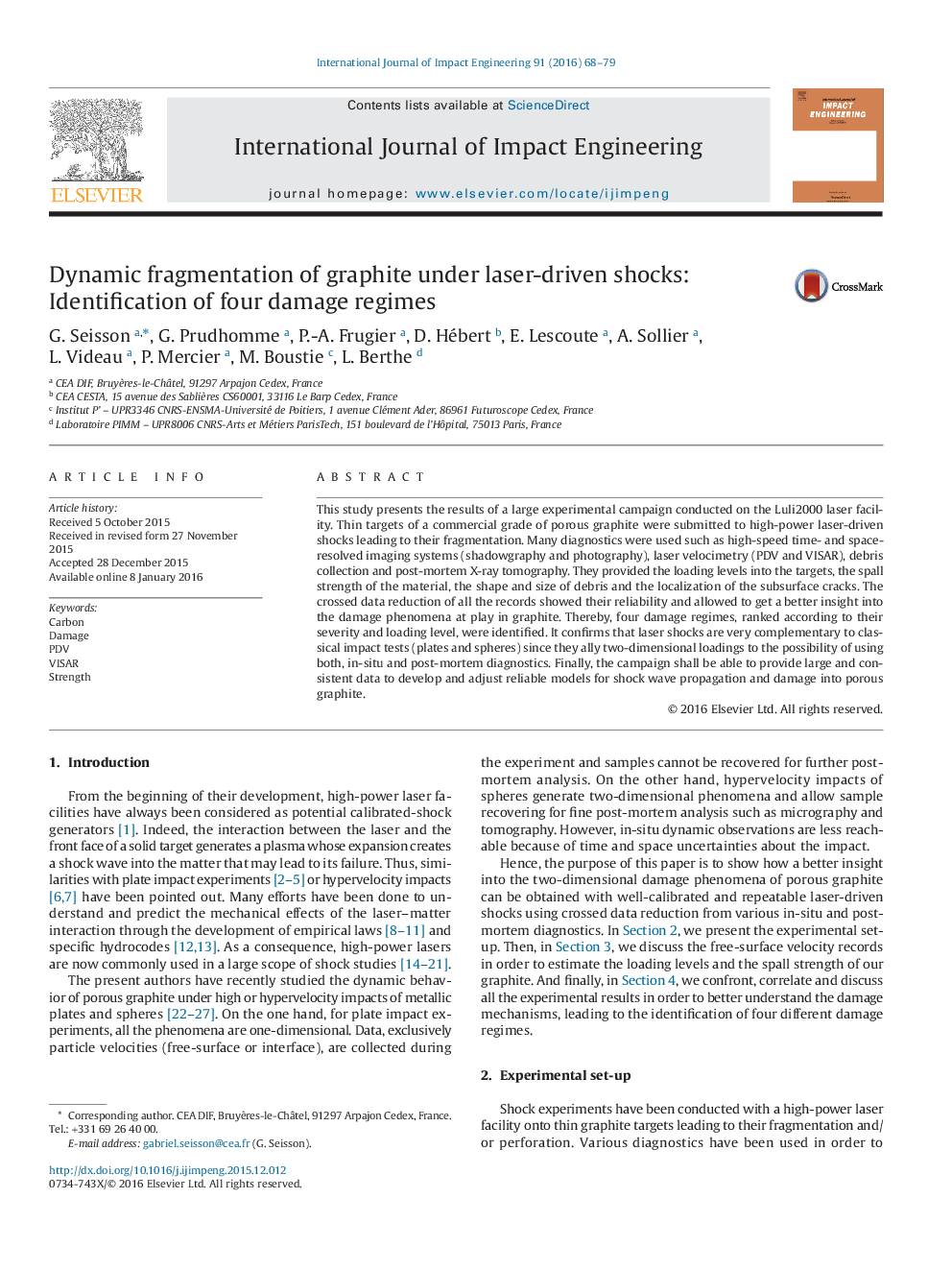| Article ID | Journal | Published Year | Pages | File Type |
|---|---|---|---|---|
| 782797 | International Journal of Impact Engineering | 2016 | 12 Pages |
•We present new high-power laser-driven shock experiments onto thin targets of graphite leading to their damage and fragmentation.•Various in-situ and post-mortem diagnostics have been used in order to collect reliable data for further computations.•Crossed data reduction allowed to get a better insight into the damage phenomena at play in graphite.•Four damage regimes were identified and ranked according to their severity and loading level.
This study presents the results of a large experimental campaign conducted on the Luli2000 laser facility. Thin targets of a commercial grade of porous graphite were submitted to high-power laser-driven shocks leading to their fragmentation. Many diagnostics were used such as high-speed time- and space-resolved imaging systems (shadowgraphy and photography), laser velocimetry (PDV and VISAR), debris collection and post-mortem X-ray tomography. They provided the loading levels into the targets, the spall strength of the material, the shape and size of debris and the localization of the subsurface cracks. The crossed data reduction of all the records showed their reliability and allowed to get a better insight into the damage phenomena at play in graphite. Thereby, four damage regimes, ranked according to their severity and loading level, were identified. It confirms that laser shocks are very complementary to classical impact tests (plates and spheres) since they ally two-dimensional loadings to the possibility of using both, in-situ and post-mortem diagnostics. Finally, the campaign shall be able to provide large and consistent data to develop and adjust reliable models for shock wave propagation and damage into porous graphite.
